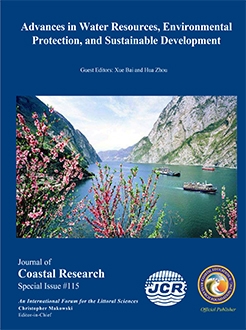Su, H.W., 2020. Performance audit of carbon emission intensity in Chinese inland and coastal areas. In: Bai, X. and Zhou, H. (eds.), Advances in Water Resources, Environmental Protection, and Sustainable Development. Journal of Coastal Research, Special Issue No. 115, pp. 451-455. Coconut Creek (Florida), ISSN 0749-0208.
Energy conservation and emission reduction have gradually changed from a secondary contradiction in the process of China's economic growth to a major contradiction. This study measures the carbon emission intensity of China's provinces over the period of 2005 to 2017. This paper uses the global Moran index, local Moran index, local LISA index and nuclear density function model to analyze the spatial correlation and coordination index of carbon emission intensity in various regions of China. The results finds that: (1) Chinese carbon emission intensity continued to decline, and the intensity of carbon emission of each economic zone is in descending order of southwest, eastern coast, northern coast, middle Yangtze River, southern coast, middle Yellow River, Northeast Comprehensive, Northwest. (2) The regional gap in China's carbon emissions intensity has gradually narrowed. The regional gap contribution has continued to increase during the observation period, and the intra-region gap contribution has continued to decline. There is a phenomenon of “convergence or club convergence” within the regional gap. (3) Chinese carbon emission intensity has a strong spatial autocorrelation among different regions. The carbon emission intensity of the regionally underdeveloped regions has a positive spatial correlation. The carbon emission intensity of the developed regions has a negative spatial correlation, but the spatial effect intensity. Both are weak. (4) The carbon emission intensity of the high-value area and the median area increased first and then decreased, and the gap between regions first narrowed and then expanded.





